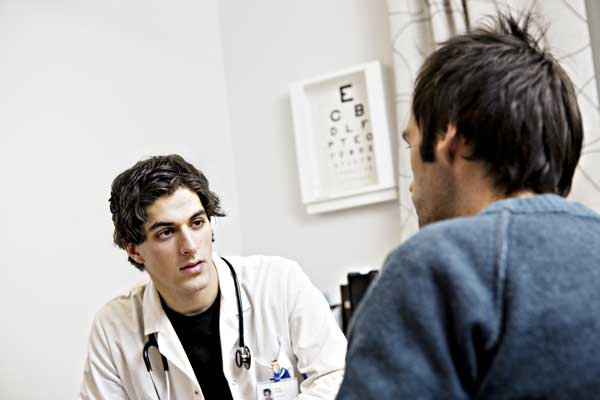Blogger:Yulan Lin
post doc at PRC
A regular GP in Norway is responsible for examining, diagnosing and treating the patients on his/her list. The regular GP is also responsible for referring patients to hospitals, other medical specialists and physiotherapists. The role GPs in primary care system was vital in ensuring early cancer diagnosis and access to treatment.
International Cancer Benchmarking Partnership (ICBP) – a collaboration between six countries from around the world with similar health care systems –published a study yesterday in British Medical Journal*, in relation to management of ovarian, lung and colorectal cancers in primary care system.
Researchers analysed survey responses from 2795 GPs on how they would manage different scenarios of patients coming to them with possible cases of either lung, colorectal or ovarian cancer. Results were compared with the one and five-year survival rates for these cancers.

A GP refer patients to hospitals, other medical specialists and physiotherapists Photo: Geir Mogen/NTNU
GP’s readiness to investigate cancer or refer patients to specialists was linked to positive survival rates. Norway’s high cancer survival rate has been linked to GP’s readiness to immediately refer patients they suspect of having a cancer, for tests or to specialists.
Compared to other countries, GPs in Norway were highly likely to refer patients to experts or for test. Australian GPs in Victoria and New South Wales reports highest willingness to immediately referral.
GPs were also asked a series of questions including what access they had to specific tests, waiting times for tests and results and whether they could speak to cancer specialists for advice.
Norway is among the regions with lowest direct access to all endoscopy tests
More than 70 per cent of GPs in Norway has direct access to blood test, X-ray, CT, MRI, and ultrasound test for possible cancer diagnosis. In contrast to other counties, Norway had the lowest access to blood tests, X-ray, and Ultrasound. Australia GPs in Victoria reported the highest access- around 99 per cent- to all these tests. Norway is among the regions with lowest direct access to all endoscopy tests-with less than 20 per cent. The peers from England and Victoria reported at least twice higher direct access than doctors in Norway.
In Norway, the average waiting time for MRI, endoscopy, Flexi sigmoidoscopy, Colonoscopy ranged between six to eight weeks, which is comparable to most of the countries. However, Norway’s waiting time for X-ray was more than two weeks, with only Sweden and England slower. The best performing region was New South Wales for X-ray, with a total waiting time of around one week.
Norway was among the countries with the highest access to specialist advice, which indicates no big barrier between GP and specialist.
Reference:
- Rose, P. et al. Explaining variation in cancer survival between eleven jurisdictions in the International Cancer Benchmarking Partnership: a primary care vignette survey. BMJ Open. 2015.
Portrait photo: Lena Sæternes
